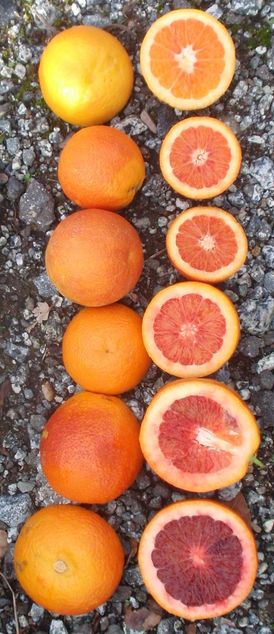|
|||||||||||
| |
Select any of 50
available languages! |
 |
|||||||||
Botanical classification of citrus fruits
Classification of citrus
 |
Any
botanical
classification
of citrus fruit faces several difficulties. All
citrus types hybridise easily. New hybrids are continuously developed
to
obtain desired qualities such as seedlessness, juiciness and fresh
taste.
New hybrids spontaneously arise by cross-pollination. The
differences
between a species, a new botanical variant, a different
cultivated
(horticultural) variety and a
minor modification
can be small indeed. In the case of older varieties and
hybrids
the most modern methods of molecular research are sometimes needed
to
distinguish different citrus types from each other. |
| Which botanical name is the correct one? | |
    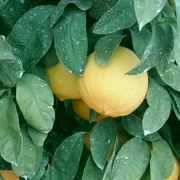 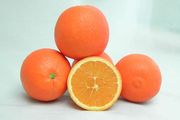 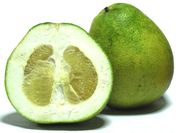 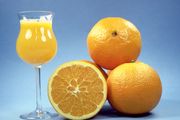 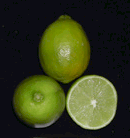 |
This is a
question many citrus enthusiasts have in their mind.
Unfortunately there is no single answer that would cover all
the known
citrus plants. However, certain decisions made in international
botanical conferences in the 1990's do simplify matters
considerably. Tokyo
code 1994
Starting from 1994 the oldest
correct classification of a plant is the one to be used in scientific
studies
accompanied by the name of its author (Tokyo Code 1994, Chapter II,
Section III, Article 11.3. where it says: "For any taxon from family to
genus inclusive, the correct name is the earliest legitimate one."
What does legitimate mean? To put it short it means a correct
written description in Latin of the plant using accepted botanical and
taxonomic practices and terms and placing a dried specimen of
the plant (called a holotype) with all the needed parts and
specifications in a public botanical library (called Herbarium)
for safekeeping so that this specimen may be referred to in case of
later dispute or doubt. Most recently also photographs available on the
Internet with correct documentation are valid. The author then
presents his findings to his peers in international botanical
conferences and publishes articles in important botanical journals to
get documented approval . Sometimes the needed documentation is lost, sometimes it was not made properly to begin with so that it is impossible by today's standards to determine with certainty which species, subspecies, variety or form the name given by an author exactly referred to, especially if the holotype is lost or was never preserved and there are no contemporary botanists who would have confirmed the classification in their own writings. In such a case this classification is ignored and the oldest correct classification is used. Nowadays
Nowadays only the International Botanical Congress,
which has been held every five years since 1900, can change the name of
a plant according to rules set out in the International Code of Botanical Nomenclature.
The currently valid code is the Vienna
Code of 2006 available on the Internet. Records of all
botanical conferences since 1950 are kept at the International Association for Plant Taxonomy
in Vienna, headed by D.J.
Mabberley, President since 2005.Earlier practices Why author names? There
are many reasons and again it is not easy to give a single short
answer. The main reason is to be able to tell classifications from one
another. In earlier times the post was slow and five years after giving
a new name a botanist could find that 15 years earlier another botanist
somewhere around the globe had already used the same name but of a
different plant completely. Author names can be abbreviations, only
Carolus Linnaeus (Carl von Linné after his ennoblement) has an initial
(L.) Author names are also important when a name given by one
author covers only a part of the plants included in the classification
of another author. In a case like that the two names cannot be used as
synonyms (example D
further down). Only names that refer to the same species or the same
members
of a family can be used as synonyms.
Classification
examples
Example
A: Trifoliate
orange Citrus
trifoliata L.
Citrus trifoliata L. is the accepted name as opposed to Poncirus trifoliata Raf. because Carolus Linnaeus (L.) made his classification of the Trifoliate orange in 1763 and Constantine Rafinesque (Raf.) in 1838. In case a later botanist has amended the description of a plant and assigned the name to another plant the name of the previous author is in brackets followed by the name of the new author. The same is true when a different genus name but the same species name was used earlier (Aurantium in the following example). Example
B: Pomelo
Citrus maxima
(Burm.)
Merril
Johannes Burman originally used the name (Aurantium maximum) in 1755 of several types of pomelo hybrids in the Far-East, but Elmer Merril specified the type and re-assigned the name in 1917 to the pomelo we know today. In the meanwhile Linnaeus had created a new genus Citrus. For the same reason Citrus maxima is the accepted botanical name of the pomelo instead of Citrus grandis Hassk. because Burman's classification predates the one given by Justus Hasskarl in 1842 Example C: Limequat Citrus × floridana (J. Ingram & H. Moore) Mabb. The species name floridana of the previous classification X Citrofortunella floridana of J. Ingram and H. Moore was retained by Mabberley when he created a new name Citrus × floridana obviously to avoid the hybrid genus Citrofortunella (see example E microcarpa). Therefore the names of the earlier authors are in brackets and also to show that the plant in question is the same and not a new species. |
 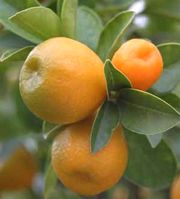     |
Matters get
more complicated when authors have used the same name
of different plants or a name that only covers certain varieties of the
same plant. Example D: Round kumquat Citrus
japonica
Thunb. 'Marumi'
The genus name Fortunella was introduced by Swingle in 1915. Whereas the various kumquat types were earlier considered varieties of the same species Swingle created a new species for each type: Fortunella margarita for the 'Nagami' type, Fortunella japonica for the 'Marumi' type and so on. Since the original classification is valid the various kumquat types 'Nagami', 'Meiwa', 'Fukushu', 'Hong Kong', 'Malayan' and 'Marumi' are cultivated varieties of the one species Citrus japonica Thunb. created by Carl Peter Thunberg in 1784. Thus the name Fortunella japonica (Thunb.) Swingle for the Round kumquat is no longer valid and can not be used as a synonym either since the Thunberg name Citrus japonica denotes all kumquats. A good example is the Calamondin Citrus × microcarpa Bunge. More has been written about the correct classification and origin of the Calamondin than most other citrus plants. And yet, the matter is quite simple. Example
E: Calamondin Citrus × microcarpa Bunge
The exact hybrid nature of the Calamondin remains to be established. It is commonly accepted to be a hybrid of a sour mandarin type and a kumquat. The most frequently mentioned candidates are the Sour mandarin Citrus sunki Tanaka of 1927 (which is the later Citrus reticulata var. austera of Swingle of 1942) and the Oval or 'Nagami' kumquat Citrus japonica Thunb. 'Nagami' (example D). It is still unclear to which plant the classification Citrus madurensis by Loureiro (1717-1791) referred to because of lack of documentation. Blanco created Citrus mitis in 1837. J.Ingram & H.E.Moore used the name X Citrofortunella mitis in 1975 and the name Citrofortunella × microcarpa was given by Wijnands in 1984. The last two are obvious attempts to acknowledge the hybrid nature of the Calamondin Citrofortunella suggesting both the genus Citrus of the mandarin parent and the genus Fortunella of kumquats. The name Citrofortunella is problematic because of its hybrid nature, as are other hybrid genus names. The whole purpose of creating the International Code of Botanical Nomenclature is establishing unambiguous plant names with the smallest propability of misunderstanding or error. As the genus Fortunella of Swingle is no longer valid either (example D) the concept has no basis. The oldest valid description and classification of the Calamondin was given by Alexander Andrejewitsch von Bunge (1803-1890) as Citrus microcarpa Bunge in 1833. When a plant is obviously of a hybrid nature the sign × is today attached between the genus and species name. Since 1997 the valid botanical name of the Calamondin is and remains Citrus × microcarpa Bunge. The hybrid sign × is only added in writing, it is not pronounced. To type it press down and hold Alt-key, type 0215 on the numeric keypad with Num lock on, release Alt-key. This is also the reason behind the changes in the names of the Native Australian citrus types explained below. The later genus names of Microcitrus (1915) and Eremocitrus (1914) created by Swingle have now been replaced by the original Citrus classifications of Ferdinand Mueller (F.Muell.) of 1858 and F.M. Bailey from the period 1890-1915. The assumption that the most recent finding is always the valid truth does not apply to botany as long as the plant in question is the same. New species are always new species and continue to be given new names. |
History |
|
| The history
of the botany of citrus fruit is fairly long. One of the
best-known early books is about the oranges of Wen-Chou,
China called
記嘉桔錄 literally: Kee Jia Citrus Record (Citrus records of Ji
Jia)
written in 1178 AD by Han Yanzhi (Han Yen-Chih Chü lü) the
governour of
the region. The book was translated in 1923 by Michael J. Hagerty as
Monograph on the oranges of Wen-Chou, Chekiang. It describes the 26
citrus varieties grown in the region, their cultivation techniques and
use. In the Western world citrus fruits have been a source of interest to botanists for nearly 400 years; almost as long as the plants have been known in the Western hemisphere. Some of the first attempts at a comprehensive view were done by Volkamer, Linnaeus, Gallesio and Risso. They were based on the appearance of the plant; the size and shape of plant, trunk, leaves and flowers and the number of petals and stamens. These parameters continue to be used in botany today. At the beginning of the twentieth century prominent citrus botanists like Swingle and Tanaka had more modern methods of analysis at their disposal and were able to make their scientific conclusions with the help of accurate laboratory measurements. Since then we have progressed to today's possibilities of DNA research . |
|
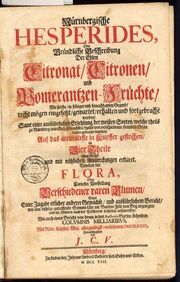 |
Volkamer
Johann Volkamer's (1644 - 1720) Nürnbergische Hesperides
published in 1708 is one of the most important early books on citrus
botany. The book with its beautiful drawings is available online as a
digitised book. |
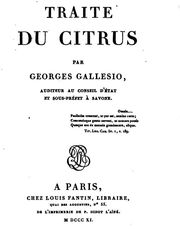 |
Gallesio
Traité du citrus (1811) by Giorgio
Gallesio (1772-1839) is also available
as a digitised book. |
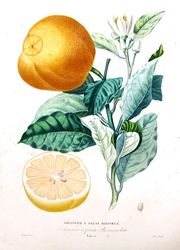  |
Risso
& Poiteau
One of the most
famous historical citrus classifications is Histoire Naturelle des Orangers
published in 1818 by Pierre Antoine Poiteau (1766-1854) and Joseph
Antoine Risso (1777-1845). It brought many new varieties into
our
attention. Whether all of them deserve the distinction of true species
is still under discussion but many of their classifications are still
valid today. One of the virtues of the book are the many
colour
drawings in the Redouté-Bessa style. In the 19th century these were of
great help in distinguishing between different citrus types. The
original book is now a historical antiquarian rarity. So far nobydy has
digitized the book in colour but Google Books has a black and white version.
|
 |
Swingle
Walter Tennyson Swingle (1871 –
1952)
was an American botanist. He had a major influence on modern
scientific approach to citrus research. He created Citrange,
a hybrid of sweet
orange and trifoliate
orange. He
assigned the genera Fortunella
to kumquats as well as Microcitrus and Eremocitrus to native
Australian citrus
types. He is the author of 95
botanical
names6 of citrus plants, the
Ichang papeda Citrus ichangensis
and the Mexican lime (Key lime, Common lime) Citrus
aurantiifolia
perhaps the most familiar among them. In his major work The
Botany of Citrus and Its Wild Relatives, published in 1943
(available on the Internet), Swingle combined all
citrus fruit into 16 species and their subspecies with various
cultivated varieties. |
 |
Tanaka
Tyôzaburô
Tanaka (1885 - 1976) is the author of 180
botanical names6 in the citrus
family Rutaceae. His most important publications include Citrus
fruits of Japan 1922, Species
problem in Citrus 1954
and Tanaka's Cyclopedia
of Edible Plants of the World 1976. Tanaka divided his
citrus fruit into 162 species. |
|
Of modern botanists D.J. Mabberley (b.1948), since 2005 president of IATP, deserves special mention. He has presented the most interesting new views of citrus and the relationships between "the true citrus types." In his paper on native Australian citrus types he introduces a new species and assigns the Swingle genera Microcitrus and Eremocitrus in the genus Citrus. In A classification for edible Citrus he states that there are only three citrus species, citron, pomelo and mandarin, which are then involved in several hybrids. In his more recent study CITRUS Linnaeus he broadens the scope to include all the most common citrus species. |
 |
|
Mabberley's classification of edible citrus In the above mentined
studies Mabberley states that in the edible citrus group there are only
three citrus species:
Citrus medica L. citron, Citrus maxima (Burm.) Merril pomelo and Citrus reticulata Blanco mandarin. Each of these is involved in several hybrids as follows: 1. Citrus medica, citron, which is involved in
2. Citrus maxima, pomelo, which is involved in a) Citrus × aurantium (pomelo ×
mandarin) which includes three pomelo hybrids
3. Citrus reticulata Blanco, mandarin. This includes mandarin, satsuma, clementine and tangerine. According to Mabberley: "This scheme provides a workable system for botanists and fruit-growers alike." Newest
technology
Since 1997 the use of molecular markers and other most recent technology of DNA analysis have provided new information. In an Analysis of the origin of several citrus species a group of scientists in the University of California found lemon Citrus × limon to be a cross of sour orange Citrus × aurantium and citron Citrus medica. They also found that lime has inherited genes of lemon, citron and the Small-flowered papeda Citrus micrantha. The same group found the bergamot Citrus × bergamia to be a cross of sour orange and limetta Citrus limetta. Another group of scientists working at the University of Catania, Italy, stated in A study of the genetic origins of various citrus species that citron and sour orange are the parents of lemon, and Citrus micrantha and citron are the parents of lime. They further pointed out that besides lemon also the Palestine sweet lime, bergamot and Volkamer lemon are hybrids of citron and sour orange while citron × mandarin hybrids were assumed of the Rangpur lime and the Rough lemon. It will be interesting to wait for the results of new studies once they have been reviewed by peers and published either in scientific journals or in international conferences. |
  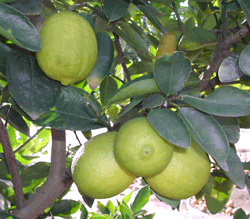 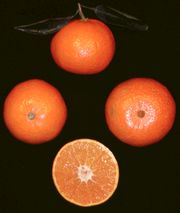 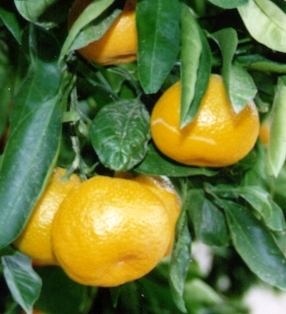 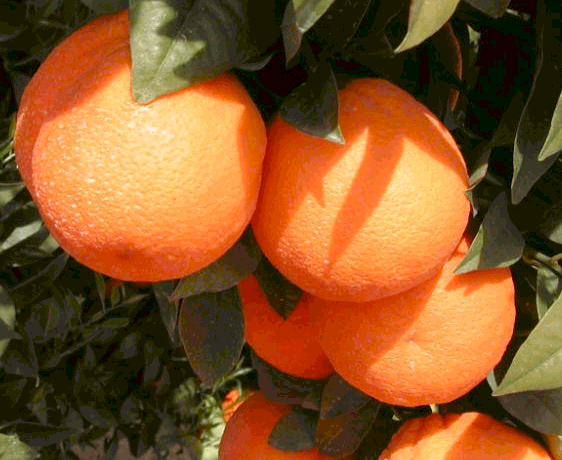 |
Classification of other citrus groups |
|
 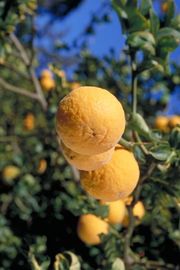 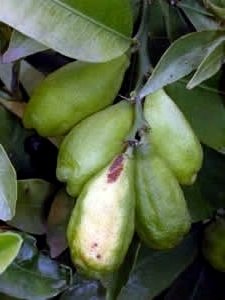  |
Markedly
resembling the other citrus
fruits in general and obviously closely related to the Calamondin and
some of the small-fruited mandarins, the kumquats were
earlier included in the
genus Citrus until W.T. Swingle in 1915 created
the
genus Fortunella. Mabberley re-assigns kumquats to
the
original Citrus japonica
Thunb. (1784). This group
also includes kumquat hybrids like lemonquats, mandarinquats, orangequats
as well as
Limequats Citrus × floridana Mabb., a classification created by Mabberley in 1998 (Mexican lime × kumquat), Faustrimedin 'Australian Sunrise Lime' Citrus × oliveri, Mabb. 2004 (Australian finger lime × Calamondin) and Citrangequat Citrus × georgiana Mabb. 2004 (Citrange × kumquat). Linnaeus
included the Trifoliate orange in the
genus Citrus. The genus Poncirus was
established by Rafinesque in 1815.
It was not until a hundred years later that Swingle gained acceptance
for its restoration to a separate standing. As an outdoor
ornamental the trifoliate orange is commonly grown in the
temperate
regions of China, Japan, Western Europe and the eastern United States.
It
is sometimes used as a very effective hedge. The
description also includes the common trifoliate hybrids: citranges,
citrumelos, citremons and many other types used as
rootstock. Mabberley re-establishes
the original Citrus
trifoliata of Linnaeus.
This Citrus group
contains seven species, five of which are native to Australia with the
other two found in New Guinea. Four Australian species occur in
rainforests and their margins from Cape York Peninsula south to the
Northern Rivers of New South Wales. They produce small, round or
finger-shaped fruit, with a pleasant but very acid juice. The Australian
desert lime Citrus
glauca
occurs in southeastern
Queensland is a small tree or a large shrub, sometimes only
a few feet high. It
is the only plant in the whole orange subfamily that is able to survive
extreme drought. Its hybrids include eremolemons, eremoranges,
eremoradias (a hybrid with the sour orange) and citrangeremos (a hybrid
with citrange). Mabberley uses the original genus Citrus of
F.M. Mueller (1825
- 1896),
Government Botanist of Victoria and F.M. Bailey (1827-1915), Colonial
Botanist of Queensland. The re-application of the genus Citrus is not an
attempt to raise the status of the native Australian Citrus types but an
automatic consequence of the Tokyo
Code of 1994.
|
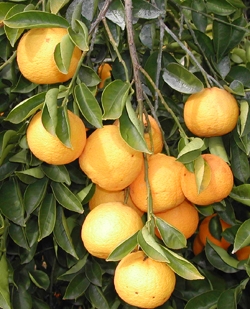 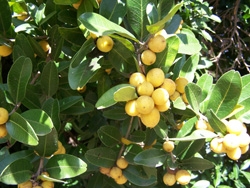 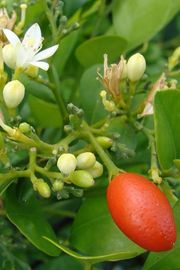 |
Papedas Papedas form a subgenus of the genus Citrus. They are a group of acid wild citrus types growing in the monsoon region and parts of Japan and China. The best-known papeda is perhaps the Kaffir lime Citrus hystrix DC. Papedas have pulp vesicules with numerous droplets of acrid oil, which often makes them inedible. Papedas belong to the oldest and most primitive known citrus types and according to recent studies have contributed their genes to many well-known citrus fruits, most notably the various kinds of limes. Citrus micrantha, the Small-flowered papeda, is one of the parents of the common lime (Key lime), Citrus aurantiifolia Swingle. Distant citrus relatives The
citrus subfamily Aurantioideae
All of the above mentioned citrus trees belong the citrus
subfamily Aurantioideae
(sometimes called Citroideae)
in the Rutaceae
family. A table
listing the tribes, subtribes, subtribal groups, genera and species of
the citrus subfamily gives an overview of the botanical relationships
of the citrus genera listed above. It concentrates on the citrus types
most familiar to the average consumer and citrus enthusiast: the
edible citrus fruits, the most common types grown for decorative
purposes as well as the ones used as rootstock. The classifications
used are pre-1994. |
| Botanical
names on
Citrus Pages Why are some botanical names on Citrus Pages different from names used on other websites? In accordance with the 1994 Tokyo code of the International Code of Botanical Nomenclature where it says: "For any taxon from family to genus inclusive, the correct name is the earliest legitimate one" the oldest valid botanical name as used by D.J. Mabberley in his studies 1, 2 and 3, is given first. It is followed by the most commonly known later synonyms so that each may make his or her own choice. The present author has made a special effort to include as many earlier, previously valid botanical names as possible. He has followed the practice in leading literature and taken note of the reference studies listed below. The fruit are divided into fourteen groups. Sometimes the division into groups is determined solely by the food use of each fruit. Thus the fruits in the lime group are not all closely related but form a collection of several different kinds of citrus fruit that are used in the kitchen in much the same way as limes. The same is true of lemons. The only completely homogeneous groups are pomelos, grapefruit and sweet oranges, all of which contain cultivated varieties of one citrus type only. Around 310 different types of citrus fruit are presented with a brief description and a photograph. Another 90 closely related cultivated varieties are mentioned bringing the number of varieties to approximately 400. The botanical index contains about 280 alternative Latin names for the 131 citrus types that at one time or another were deemed valid species and were thus given a botanical name by an author. |
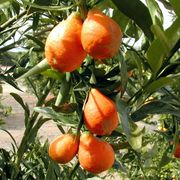 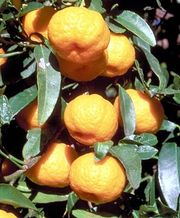 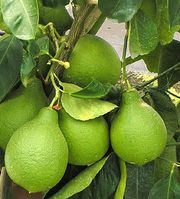 |
Monoembryony,
nucellar embryony and polyembryony in citrus seeds.
Glossary:
Monoembryony
Monoembryony
is the usual case in many living creatures. A seed is formed that
consists of
one embryo that is sexually produced (zygotic) and
inherits the
genes of
both parents. In other plants (not Citrus) the seeds being true to type
is
often caused by the incompatibility of the pollen of other species.Three important citrus types produce monoembryonic and therefore zygotic seeds only 'Clementine' mandarin Pomelo, Citrus maxima 'Temple' tangelo These three have been widely used in breeding because they are of high quality and all crosses of these as mother plants produce hybrid seeds and not nucellars. Nucellar embryony
Nucellar
embryony (notated Nu+) is a form of seed reproduction that occurs
in many
citrus varieties. During the germination of seeds from plants that
possess this
genetic trait, the nucellar tissue which surrounds the embryo sac in
the ovule
can produce additional embryos (polyembryony) which are genetically identical
to the parent plant. These nucellar seedlings are essentially clones of the
parent. By contrast, zygotic seedlings are sexually
produced
and inherit
genetic material from both parents. Nucellar embryos begin development
as soon
as pollination occurs while zygotic embryos take four weeks to develop;
thus,
nucellar embryos often crowd out the zygotic embryos. Pollination is
usually
needed to trigger also nucellar development.Nucellar embryony is important to the citrus industry. Most commercial rootstock varieties produce mainly nucellar seedlings which do not inherit any of the traits of the "father" plant. This allows for the production of uniform rootstock which yields consistent results in fruit production. However, this trait causes problems for cross-breeding. Hybridising two plants that produce mostly nucellar embryos can be very difficult. Sweet oranges (89.3 –97.3% polyembryonic [*8]) cannot be successfully crossed. Practically all currently available sweet orange varieties are spontaneous mutations that first occurred either as seedlings or more often as limb sports or bud mutations. There are some important implications of nucellar embryony. Rootstocks such as 'Rough Lemon', 'Sour Orange', and ‘Trifoliate orange’ can be produced true-to-type from seed. This is important for nurseries because virus is not transmitted through either nucellar or zygotic seed. Thus, nurseries can produce virus-free, clonal rootstocks from seed. Virus can be eliminated from infected clones but this is very expensive. There are various degrees of nucellar embryony. Some cultivars produce only nucellar embryos, and some vary in the percentage of nucellar embryos. The ‘Volkamer lemon’ can produce about 50% nucellar embryos while the rest are zygotic [7*.] Nucellar seedlings can have slightly variable traits. Often nucellar bud lines are more vigorous and more productive. Polyembryony
Polyembryony means the occurrence of several embryos in one seed. The amount of polyembryony within a seed varies from type to type In lemons Citrus × limon 25 – 43% of seeds are polyembryonic the rest being zygotic [7.*] Polyembryony seems not to be caused by a single gene or factor. In a study of seeds of the Valencia orange polyembryony seemed to coincide with a difference in the albumin and globulin structure and content of the nucellar tissue. [9*] The amount of polyembryony in the seeds of Volkamer lemon is affected by weather, location, year of harvest and type of pollinator but there seems to be no correlating factor between the fruit characteristics and polyembryony. It was not possible to determine which Volkamer lemon fruit may have more polyembryony just by comparing their characteristics. In contrast, a high correlation has been found in the characteristics of ‘Cleopatra’ mandarin. [11*] Which citrus
fruits will come true to type from seed?
Tom McClendon writes in Hardy Citrus for the South East: “Most
common citrus such as oranges, grapefruit, lemons and most mandarins
are
polyembryonic and will come true to type. Because most citrus have this
trait,
hybridization can be very difficult to achieve. In the late 19th
century, when
the first attempts at controlled hybridization were attempted by the
United
States Department of Agriculture in Florida, Walter T. Swingle reported
that
more than 1,100 sweet orange seeds pollinated with trifoliate orange
pollen
were required to produce the first citranges, and seven of these came
from a
single fruit. The good news is that polyembryony helps stabilize
varieties,
which allows seeds to be passed around with little chance of spreading
diseases
such as viruses. This unique characteristic allows amateurs to grow
citrus from
seed, something you can’t do with, say, apples.” [12*]
Highly monoembryonic citrus types: Will produce zygotic monoembryonic seeds that will not come true to type. Many “true Citrus species” such as Citrus cavaleriei (C. ichangensis) Ichang papeda Citrus glauca (Eremocitrus glauca) Australian desert lime Citrus indica Citrus japonica (Fortunella) most kumquats Citrus maxima pomelo (pummelo, Schaddock) Citrus medica citron And the citron hybrids: Citrus × latifolia
Persian lime (Tahiti lime,
Bearss lime)
Citrus × bergamia Bergamot. Some grapefruit hybrids like Orangelos are monoembryonic and are therefore most likely pomelohybrids: New Zealand Grapefruit (Poorman Orange) Wheeny One true citrus species, mandarin Citrus reticulata, is highly variable. The following are monoembryonic: Clementines (Marisol, Oronules, Loretina, Beatriz, Clemenpons, Arrufatina, Esbal, Oroval, Clemenules, Orogrande,
Tomatera, Fina, Nour, Hernandina, Clementard) Ellendale Encore Fortune Fremont (50% monoembryonic) Temple Ugli Umatilla Wilking
Citrus
× aurantiifolia
Mexican lime (Key lime, West Indian lime)
Citrus × insitorum (×Citroncirus webberii) Citranges, such as Rusk, Troyer etc. Citrus × jambhiri ‘Rough lemon’, ‘Rangpur’ lime, ‘Otaheite’ lime Citrus × limettioides Palestine lime (Indian sweet lime) Citrus × microcarpa ‘Calamondin’ Citrus × paradisi Grapefruit. True grapefruit are polyembryonic (Marsh, Star Ruby, Redblush etc.) but some hybrids are not. Citrus × sinensis Sweet oranges (Blonde, navel and blood oranges) Citrus amblycarpa 'Nasnaran' mandarin Citrus depressa ‘Shekwasha’ mandarin Citrus karna ‘Karna’, ‘Khatta’ Citrus kinokuni ‘Kishu mandarin’ Citrus
lycopersicaeformis
‘Kokni’ or
‘Monkey mandarin’
Citrus
macrophylla ‘Alemow’
Citrus reshni ‘Cleopatra’ mandarin Citrus sunki (Citrus reticulata var. austera) Sour mandarin Citrus trifoliata (Poncirus trifoliata) Trifoliate orange The following mandarin
varieties are
polyembryonic: Dancy
Emperor Empress Fairchild Kara Kinnow Mediterranean (Avana, Tardivo di Ciaculli) Murcott Naartje Nova (Clemenvilla) Ortanique Ponkan Sampson Satsumas (Hashimoto, Okitsu, Clausellina, Owari) Willowleaf (Común) The following lemon types are polyembryonic: Fino (Primofiori) Verna (Berna) Eureka Lisbon for other lemon varieties see Intermediate embryony below: And a few more citrus types: Marrakech
limetta
Fukushu kumquat (Fortunella obovata) Nanshôdaidai
|
References |
|
1 Australian Citreae with notes on other Aurantioideae (Rutaceae) Mabberley, D.J. Rijksherbarium, University of Leiden, Netherlands and Royal Botanic Gardens, Mrs Macquaries Road, Sydney, NSW 2000, Australia (1998) Telopea 7(4):333–344. http://www.rbgsyd.nsw.gov.au/__data/assets/pdf_file/0003/73236/Tel7Mab333.pdf 2 A classification for edible Citrus D.J. Mabberley, Rijksherbarium, University of Leiden, Netherlands and Royal BotanicGardens, Mrs Macquaries Road, Sydney, NSW 2000, Australia (1997) Telopea 7(2): 167–172. http://www.rbgsyd.nsw.gov.au/__data/assets/pdf_file/0019/73216/Tel7Mab167.pdf 3 CITRUS Linnaeus, Sp. Pl. 2: 782. 1753. Zhang Dianxiang, David J. Mabberley, Fl. China 11: 90–96. 2008. http://flora.huh.harvard.edu/china/PDF/PDF11/Citrus.pdf 4 RFLP analysis of the origin of Citrus bergamia, Citrus jambhiri, and Citrus limonia Federici, C.T., Roose, M.L. and Scora, R.W. 2000. Acta Hort. (ISHS) 535:55-64 http://www.actahort.org/books/535/535_6.htm http://plantbiology.ucr.edu/faculty/roose.html#2 5 Citrus phylogeny and genetic origin of important species as investigated by molecular markers E. Nicolosi, Z. N. Deng, A. Gentile, S. La Malfa, G. Continella and E. Tribulato Istituto di Coltivazioni arboree, University of Catania, Italy. Theoretical and Applied Genetics 100(8): 1155-1166. http://www.springerlink.com/content/tjggcl5wyyu6l69d/ 6 The International Plant Names Index (IPNI) database of authors. 7 Assessment of polyembryony in lemon: rescue and in vitro culture of immature embryos O. Pérez-Tornero and I. Porras Instituto Murciano de Investigación y Desarrollo Agrario y Alimentario, C/ Mayor s/n, 30150 Murcia, Spain Plant Cell, Tissue and Organ Culture 2008, 93: 173-180 http://resources.metapress.com/pdf-preview.axd?code=235001u8w4877334&size=largest 8 Studies on Polyembryony and Improvement of Breeding Efficiency of Oranges. Hwang A-shiang and Yeuh Ching-shi. http://www.tari.gov.tw/taric/uploads/publication_no27-10.pdf 9 Polyembryony in Citrus Accumulation of Seed Storage Proteins in Seeds and in Embryos Cultured in Vitro Anna M. Koltunow, Tetsushi Hidaka and Simon P. Robinson Plant Physiol. (1 996) 11 O: 599-609 http://www.ncbi.nlm.nih.gov/pmc/articles/PMC157756/ 10Marker enrichment and construction of haplotype-specific BAC contigs for the polyembryony genomic region in Citrus Michiharu Nakano, Tokurou Shimizu, Hiroshi Fujii, Takehiko Shimada,Tomoko Endo, Hirohisa Nesumi, Takeshi Kuniga and Mitsuo Omura Breeding Science Vol. 58 (2008) , No. 4 375-383 http://www.jstage.jst.go.jp/article/jsbbs/58/4/58_375/_article 11Polyembryony and identification of Volkamerian lemon zygotic and nucellar seedlings using RAPD María Andrade-Rodríguez, Angel Villegas-Monter, Guillermo Carrillo-Castañeda, and Armando García-Velázquez. Pesq. agropec. bras., Brasília, v.39, n.6, p.551-559, jun. 2004 http://webnotes.sct.embrapa.br/pdf/pab2004/junho/39n06a06.pdf 12Hardy Citrus for the South East Tom McClendon Southeastern Palm Society SPS Publishing http://www.sepalms.org/Publications/Hardy%20Citrus%20sample.pdf |
 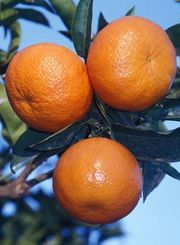 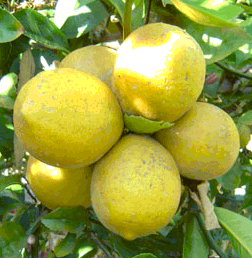   |
| Literature and other sources | |
| Walter
T.
Swingle and Philip C. Reece: The
Botany of Citrus and Its Wild Relatives. Chapter
3 of The
Citrus Industry Vol 1 pp 190 - 430. Originally published in 1943 this
is one of the best-known taxonomic descriptions of citrus fruit. Now
also available in its
entirety on the Internet. Robert Willard Hodgson: Horticultural Varieties of Citrus Chapter 4 of The Citrus Industry. An extensive description of both common and rare cultivated varieties of citrus, also available on the Internet. R. Cottin: Citrus of the World, A citrus directory, SRA - INRA - CIRAD © 2002 A catalogue of more than 5500 citrus names, classified by botanical, common and cultivar names. Includes a useful comparison of Swingle and Tanaka terminology listing equivalent names of both. D.J. Mabberley: The Plant-Book, Second edition, Oxford University Press © 1997, 858 pp. James Saunt: Citrus Varieties of the World, Second edition, Sinclair UK © 2000, 160 pp. University of California, Riverside Citrus Variety Collection, Citrus varieties A presentation of the most important common varieties at the UCR Experiment Station. University of California, Riverside CCPP Citrus Clonal Protection Program, Variety data A presentation of the holdings of the CCPP citrus variety collection with the relevant data. Répartition des variétés par espèces. Station de recherche agronomique SRA-INRA Corse. Détails des variétés par espèces. Station de recherche agronomique SRA-INRA Corse. These two large databases detail the holdings of the INRA Citrus Research Station in Corsica, France. Molecular characterization and genetic diversity among Japanese acid citrus based on RAPD markers A. Asadi Abkenar and S. Isshiki 2002. Laboratory of Biotechnology and Plant Breeding, Saga University, Japan. Journal of Horticultural Science & Biotechnology (2003) 78 (1) 108-112 http://www.citrusvariety.ucr.edu/citrus/documents/JapaneseAcidCitrus.pdf Native Australian Citrus – wild species, cultivars and hybrids Primary Industries and Resources, Government of South Australia (PIRSA) FS No: 7/03 http://www.ausbushfoods.com/new/upload/factsheets/ancitrus.pdf Molecular Genetic Analysis of Nucellar Embryony in Citrus Mikeal Roose: Department of Botany and Plant Sciences, University of California at Riverside Citrus Research Board 2000 Annual Report. http://www.citrusresearch.com/documents/c7a4fcdf-c23a-4742-8992-d1303b4c636b.PDF |
 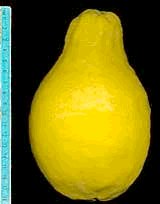 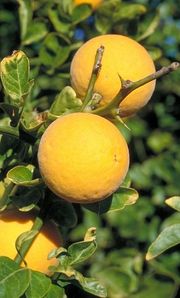  |
e-mail to Citrus Pages
|
|
Page up-dated 25 February 2011
http://users.kymp.net/citruspages/classification.html

